Nestled beneath the iconic Lung Cu Flagpole in Vietnam’s northernmost province, Then Pa village offers travelers a rare glimpse into authentic Hmong culture amid breathtaking landscapes. This hidden gem in Ha Giang remains largely untouched by mass tourism, preserving traditional ways of life that have endured for generations. At Phieu Travel, we’ve explored this remarkable village multiple times and continue to be captivated by its quiet beauty, cultural significance, and the warm hospitality of its residents. Join us as we unveil everything you need to know about Then Pa Ha Giang from its location and cultural treasures to practical travel advice.
1. Introduction to Then Pa Village
The journey to Then Pa reveals one of Vietnam’s most pristine cultural enclaves. This small Hmong village sits peacefully at the foot of Dragon Mountain, where Vietnam’s northernmost landmark the Lung Cu Flagpole proudly stands. Despite its proximity to this popular tourist destination, Then Pa has maintained its authentic character and traditional lifestyle.
1.1 Overview & History
Then Pa village belongs to Lung Cu commune in Dong Van district, Ha Giang province. The village has been home to the Hmong people for centuries, with families passing down customs and agricultural practices through generations. Unlike more developed parts of Vietnam, Then Pa offers a window into a simpler way of life that revolves around farming, community, and deep-rooted cultural traditions. The name “Then Pa” itself carries cultural significance in the Hmong language, reflecting the village’s historical connection to local legends and spiritual beliefs.
1.2 Why Then Pa is unique
What sets Then Pa apart from other villages in Ha Giang is its remarkable state of preservation. While neighboring areas have embraced tourism infrastructure, Then Pa remains refreshingly authentic. The village is known for its traditional Hmong earthen houses with yin-yang tiled roofs, ancient sa mộc trees (a type of cypress), and stunning surroundings of limestone karst formations. During our visits with Phieu Travel groups, we’ve observed how the village’s position tucked away yet accessible has allowed it to maintain cultural integrity while still welcoming respectful visitors.
The most distinctive feature of Then Pa is undoubtedly the harmonious way traditional life continues amidst one of Vietnam’s most dramatic landscapes. Here, daily routines follow the rhythm of seasons rather than tourist schedules. Villagers can be seen tending to their crops, crafting textiles, or gathering for community events all against the backdrop of soaring karst peaks and terraced fields.
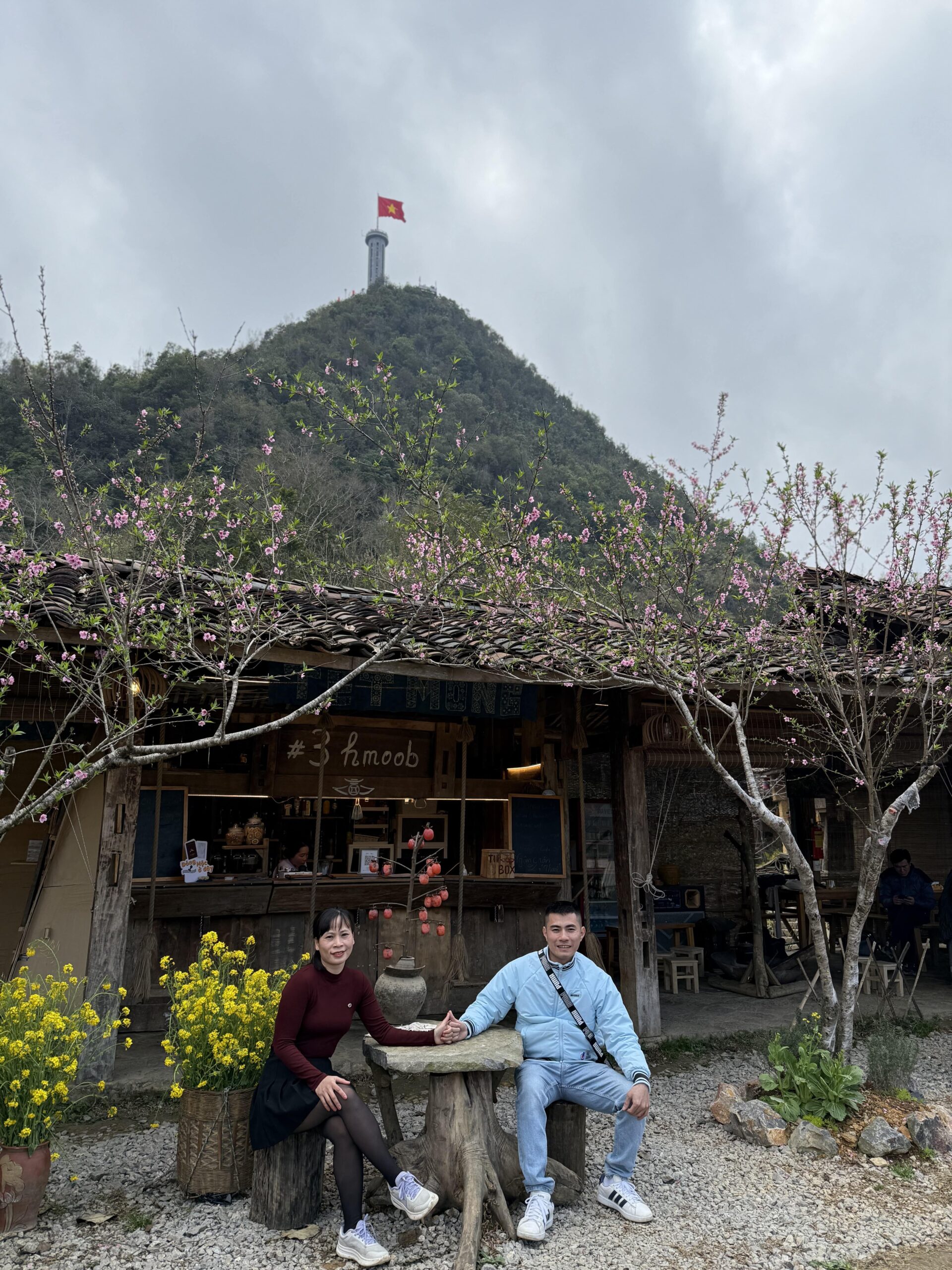
Lung Cu Flag Tower – A Sacred Symbol at Vietnam’s Northernmost Point
2. Where is Then Pa Village?
Understanding Then Pa’s location helps appreciate both its cultural isolation and its accessibility for travelers. The village occupies a privileged position in Ha Giang’s geography, making it a worthwhile addition to any northern Vietnam itinerary.
2.1 Map & Geography
Then Pa village is situated in Lung Cu commune, approximately 170 kilometers from Ha Giang city. It lies at the foot of Dragon Mountain (Núi Rồng), with the famous Lung Cu Flagpole towering above at 1,700 meters. The village is part of the Dong Van Karst Plateau Geopark a UNESCO-recognized site known for its exceptional limestone formations. Surrounded by terraced fields and rocky outcrops, Then Pa enjoys a relatively temperate climate compared to other highland areas. The village sits at an elevation of approximately 1,400-1,500 meters above sea level, contributing to its cool temperatures year-round.
From a geographic perspective, Then Pa’s position near Vietnam’s northern border explains much of its cultural character. The village serves as a living example of the cross-border connections between Hmong communities in Vietnam and China. This borderland position has historically allowed Then Pa to preserve traditions while selectively adopting outside influences.
2.2 Getting There from Ha Giang and Dong Van
Reaching Then Pa requires some planning, but the journey itself is part of the experience. From Ha Giang city, you’ll need to follow the famous Ha Giang Loop road toward Dong Van and Lung Cu. The most common route takes you through Quan Ba, Yen Minh, and Dong Van before reaching Lung Cu commune.
From Ha Giang city center:
- Take National Road 4C toward Quan Ba (Heaven’s Gate Pass).
- Continue through Yen Minh district.
- Proceed to Dong Van town (approximately 3 hours from Ha Giang).
- From Dong Van, follow signs to Lung Cu Flagpole (about 1 hour).
- Then Pa village is located just below the flagpole area.
For travelers with limited time, Phieu Travel recommends staying overnight in Dong Van before visiting Then Pa. This allows for an early morning departure, giving you ample time to explore the village before the afternoon mist typically rolls in. Most visitors arrive by motorbike or car, though the final stretch to the village may require walking along narrow paths. The journey from Dong Van to Then Pa takes approximately 1-1.5 hours by motorbike, with the road conditions varying seasonally.
While public transportation to Then Pa is limited, Phieu Travel can arrange private transfers or guided motorbike tours that include the village in a comprehensive Ha Giang itinerary. This ensures you’ll have reliable transportation while benefiting from local knowledge about road conditions and the best times to visit.

The Ultimate Ha Giang Loop Guide (2025): Itinerary, Map & Tips
3. Culture of Then Pa Village
The cultural landscape of Then Pa offers visitors an authentic immersion into Hmong traditions. From distinctive architecture to daily customs, the village preserves practices that have largely disappeared from more developed regions.
3.1 Hmong Traditions & Daily Life
The Hmong people of Then Pa maintain a lifestyle deeply connected to the land and their ancestral customs. Most families sustain themselves through agriculture, cultivating corn, rice, and medicinal herbs on the surrounding terraced fields. Traditional gender roles remain evident men typically handle heavy farming work and construction, while women manage household affairs, childcare, and the creation of textiles.
During our Phieu Travel visits to Then Pa, we’ve observed how community connections shape daily life. Extended families often live together or in adjacent homes, sharing resources and childcare responsibilities. Meals are communal affairs, with dishes like thắng cố (a traditional meat stew), smoked pork, and corn wine featured prominently during celebrations or when welcoming guests.
The spiritual life of Then Pa’s residents blends animist beliefs with ancestor worship. Special occasions follow the lunar calendar, with New Year celebrations (Tet) being particularly important. The distinctive Hmong New Year features buffalo fights, reed pipe performances, and courtship rituals where young people meet through traditional “ball throwing” games. While some younger villagers have adopted more modern influences, most families in Then Pa still observe these age-old traditions.
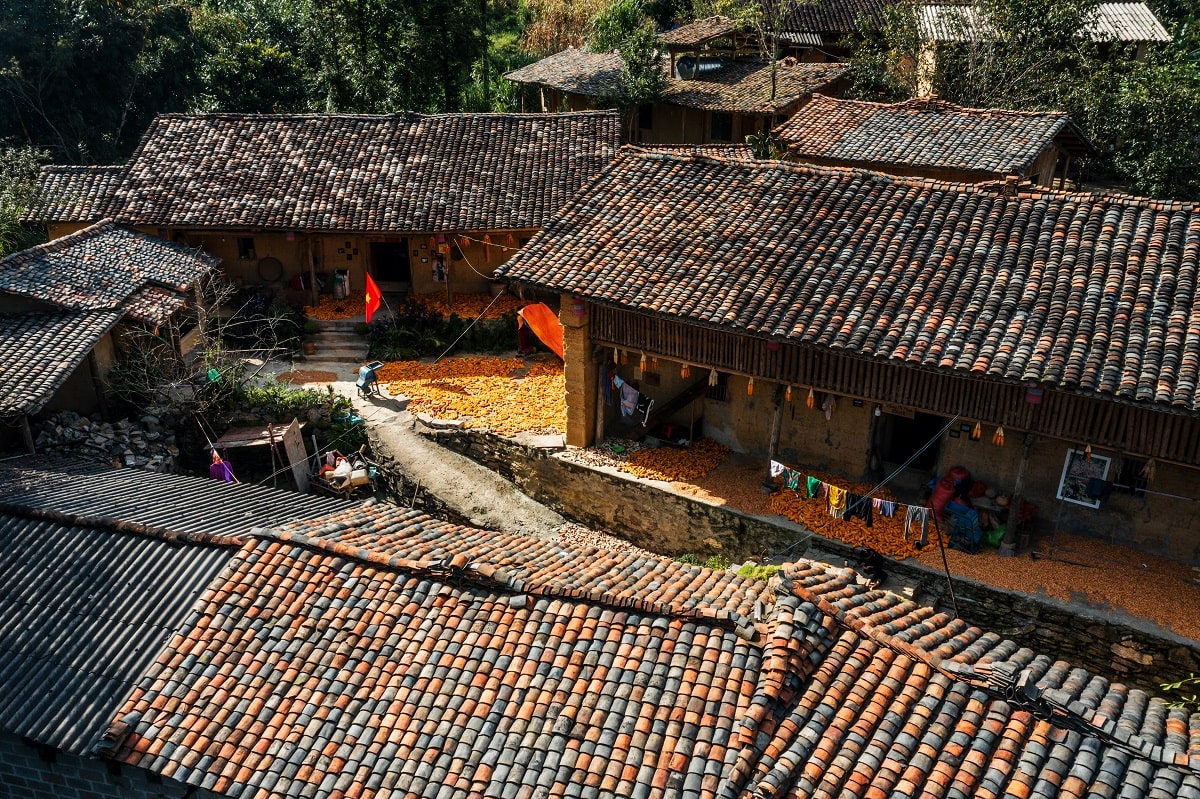
3.2 Architectural Highlights
The built environment of Then Pa reflects both practical adaptation to the highland climate and deep cultural significance. Traditional Hmong houses in the village typically feature earthen walls (trinh tường), wooden frames, and distinctive yin-yang tiled roofs. These homes are built directly on the ground rather than on stilts, helping them retain heat during the cold mountain winters.
The layout of Hmong houses follows traditional spatial organization, with a central hearth serving as both cooking area and family gathering space. Smoke from the cooking fire rises through the roof, helping to preserve the wooden structure and thatch. Around the main room, small compartments serve as sleeping areas and storage spaces.
Perhaps the most visually striking architectural element in Then Pa is the stone fencing that surrounds many properties. These carefully constructed walls use local limestone without mortar, showcasing the Hmong people’s skill in working with their environment. During our Phieu Travel explorations, we’ve found that these stone walls create a distinctive landscape pattern visible from higher vantage points like the Lung Cu Flagpole.
3.2.1 The Ancient Sa Moc Trees
No discussion of Then Pa would be complete without mentioning its ancient sa mộc trees (Fokienia hodginsii). These cypress-like conifers have stood in the village for centuries, with some specimens estimated to be over 500 years old. The trees hold profound cultural and spiritual significance for local residents, who consider them protectors of the village.
Beyond their cultural importance, sa mộc trees serve practical functions. Their wood is highly valued for construction and furniture-making due to its durability and natural resistance to insects. The distinctive aroma of sa mộc has been shown to repel mosquitoes naturally. For the Hmong people, these trees represent a living connection to their ancestors who planted and protected them.
Visitors to Then Pa will notice that these ancient trees often serve as gathering points for community activities. Their broad canopies provide shelter from both sun and rain, creating natural spaces for social interaction. Phieu Travel guides often arrange rest stops beneath these majestic trees, allowing travelers to appreciate their significance while learning about their role in village life.
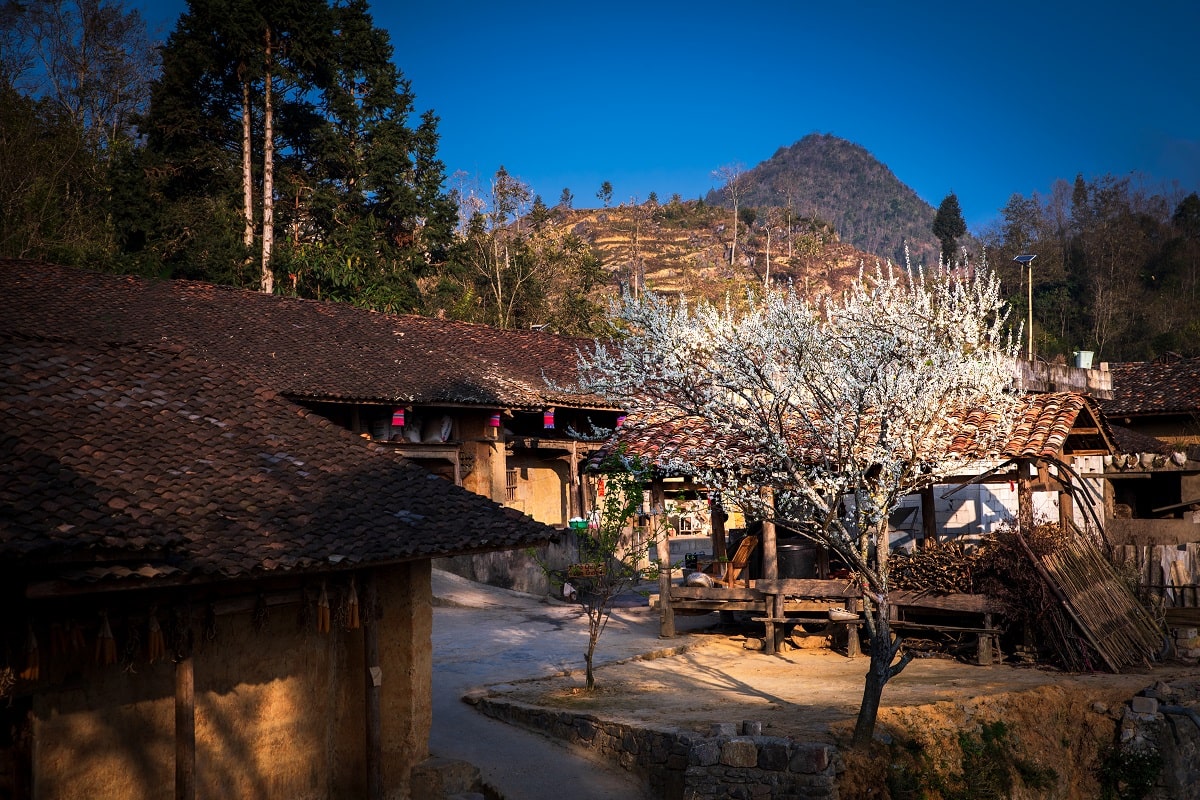
The Best Time to Visit Ha Giang: A Seasonal Guide to Flowers & Festivals
4. Top Things to Do in Then Pa Village
Exploring Then Pa offers a range of authentic experiences that go beyond typical tourist activities. The village rewards curious travelers with meaningful cultural interactions and stunning photography opportunities. Based on Phieu Travel’s extensive experience in the region, here are our recommendations for making the most of your visit.
4.1 Community-Based Tourism Experiences
Then Pa has begun embracing community-based tourism, allowing visitors to participate in daily activities alongside local families. These experiences provide both additional income for villagers and authentic cultural immersion for travelers. Some of the most rewarding activities include:
- Agricultural participation: Depending on the season, visitors can join in harvesting corn, picking medicinal herbs, or tending to garden plots. These hands-on experiences provide insight into the community’s agricultural practices.
- Traditional craft demonstrations: Several families in Then Pa maintain traditional skills like textile weaving, basket making, and blacksmithing. Phieu Travel can arrange demonstrations where you’ll learn basic techniques and understand the cultural significance of different patterns and designs.
- Home visits: Respectful visits to local homes offer glimpses into daily life. These should always be arranged through community leaders or trusted guides to ensure you’re welcomed appropriately.
- Cultural performances: On special occasions, village elders organize traditional music and dance performances. The distinctive sounds of the qeej (reed pipe) and the rhythmic movements of Hmong dance tell stories that have been passed down for generations.
When participating in these activities, remember that you’re engaging with living traditions rather than staged performances. Phieu Travel emphasizes respectful interaction, appropriate compensation for villagers’ time, and meaningful cultural exchange rather than superficial encounters.
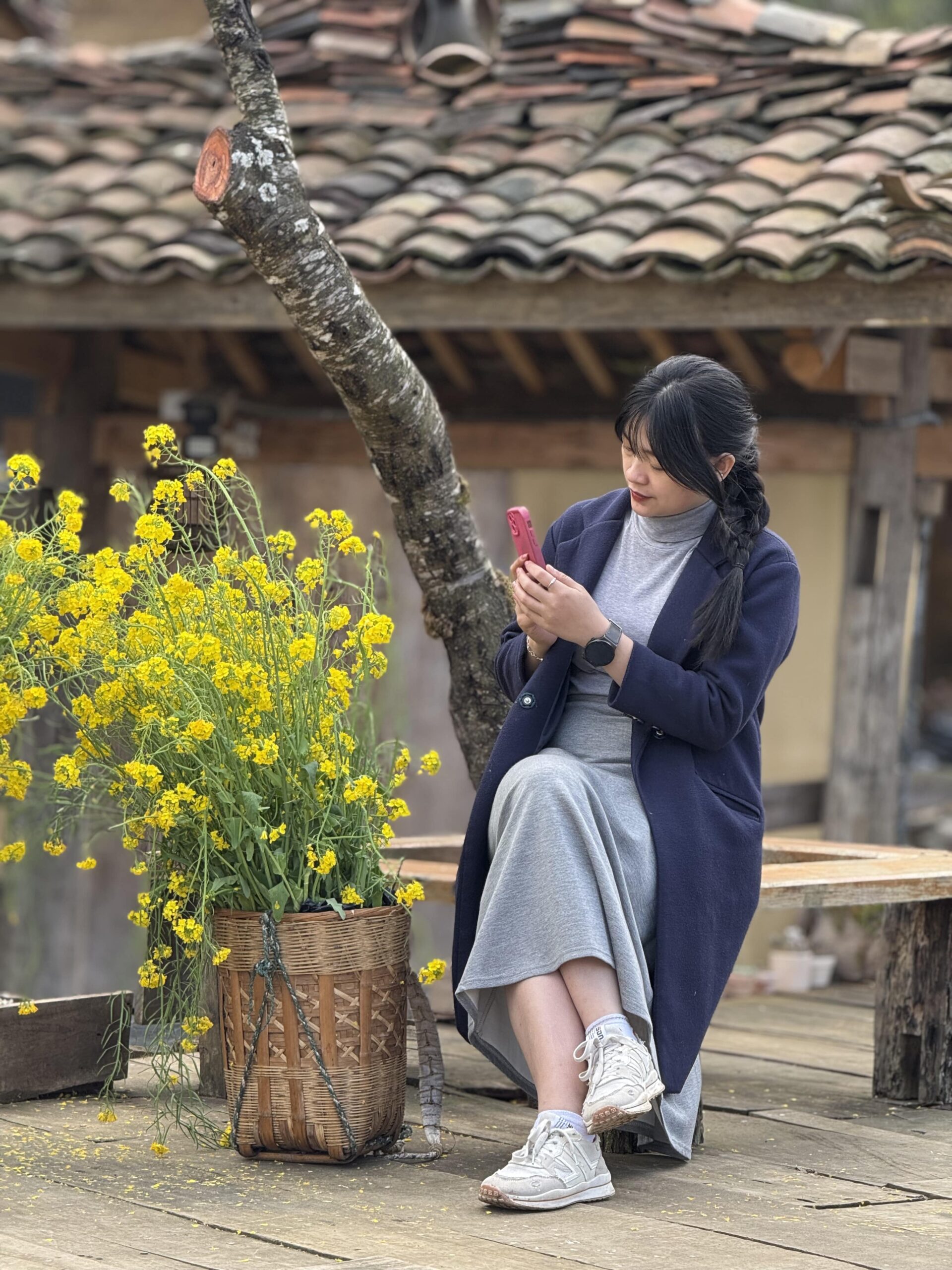
4.2 Food, Handicrafts, Corn Wine & Men Men
The culinary and craft traditions of Then Pa provide delicious insights into Hmong culture. Local gastronomy relies heavily on ingredients grown in the surrounding mountains, with preservation techniques developed over centuries to ensure food security through harsh winters.
Food experiences to seek out include:
- Men men: This distinctive cornmeal-based staple resembles polenta and serves as the foundation of many meals. It’s typically eaten with vegetables or meat dishes.
- Thang co: Though not for the faint-hearted, this traditional stew made from various meat parts (including organs) represents an important cultural dish, especially during celebrations.
- Smoked meats: Hmong households in Then Pa preserve meat by smoking it over their hearths, creating intensely flavored proteins that last through winter months.
- Corn wine (rượu ngô): This potent homemade spirit plays an important role in Hmong hospitality. When offered a cup, it’s considered polite to at least sip it.
The handicrafts of Then Pa showcase extraordinary attention to detail. Hmong textiles feature intricate batik (wax-resist dyeing), embroidery, and appliqué work, with patterns that tell stories of family lineage and natural surroundings. Visitors can purchase textiles directly from artisans, providing valuable income while preserving traditional craftsmanship.
Phieu Travel recommends bringing small denominations of Vietnamese dong for purchases, as change can be limited in the village. When buying handicrafts, understand that prices reflect hours of painstaking handwork rather than mass production.
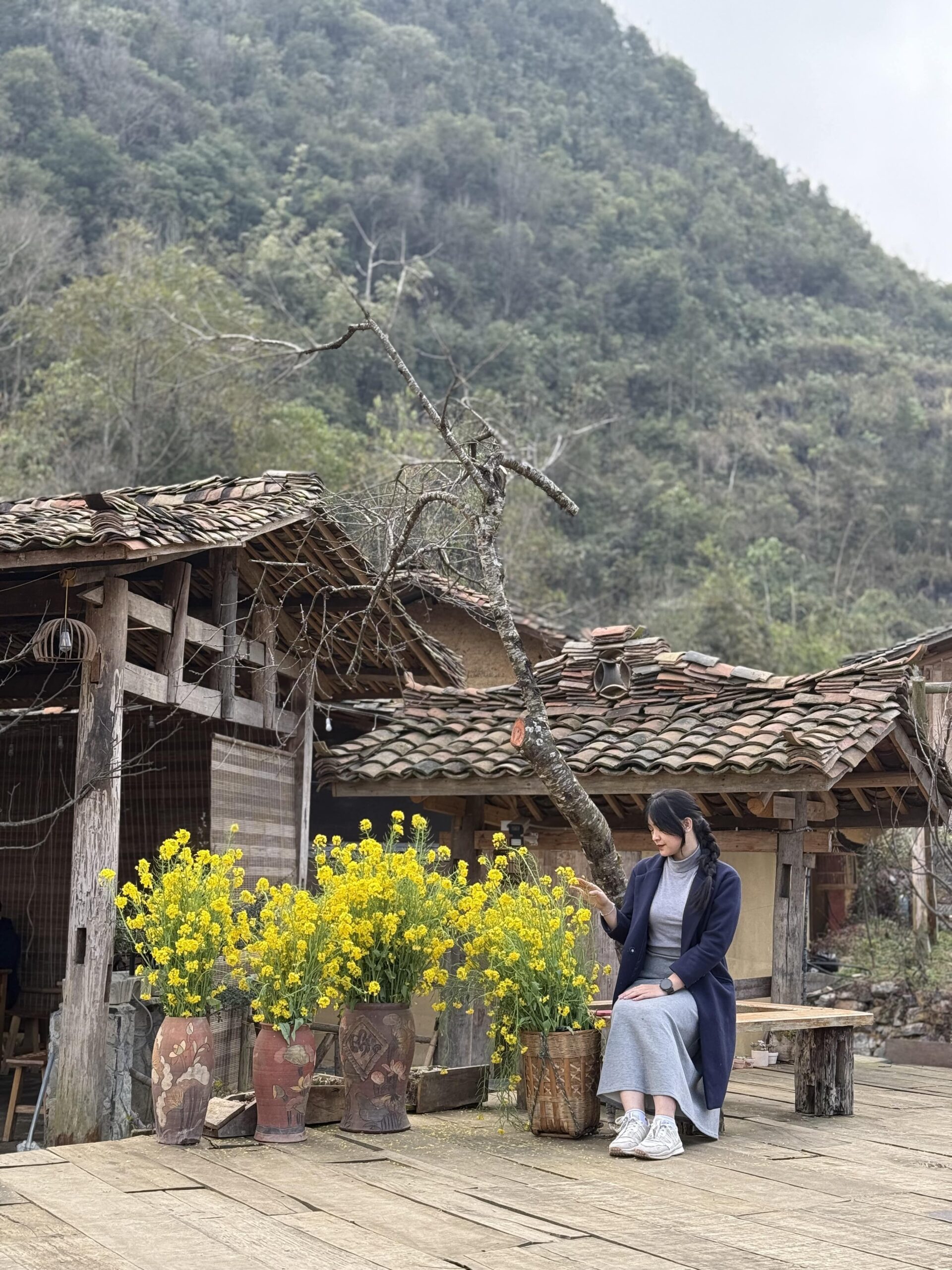
4.3 Walking Tours and Photography Spots
Then Pa’s landscape offers exceptional opportunities for both casual strolls and more ambitious hikes. The village’s setting with limestone formations, terraced fields, and traditional architecture creates a photographer’s paradise in any season.
For walking enthusiasts, Phieu Travel suggests these routes:
- Village center exploration: A gentle walk through the heart of Then Pa reveals daily life, with chances to observe traditional architecture and community spaces.
- Sa moc tree circuit: A slightly longer walk connects the ancient trees, with informative signage explaining their significance.
- Terraced field viewpoints: More challenging paths lead to elevated viewpoints where you can appreciate the agricultural landscape surrounding the village.
Photography enthusiasts should note these prime locations:
- Early morning light on the earthen houses creates a golden glow that highlights architectural details.
- Midday views from higher elevations show the village layout against the backdrop of karst formations.
- Late afternoon captures villagers returning from fields, often with dramatic cloud formations over the mountains.
For the most rewarding experience, Phieu Travel suggests visiting Then Pa in the early morning when village activities begin, or late afternoon when the light softens and daily work concludes. These times offer the best combination of photographic conditions and cultural observations.
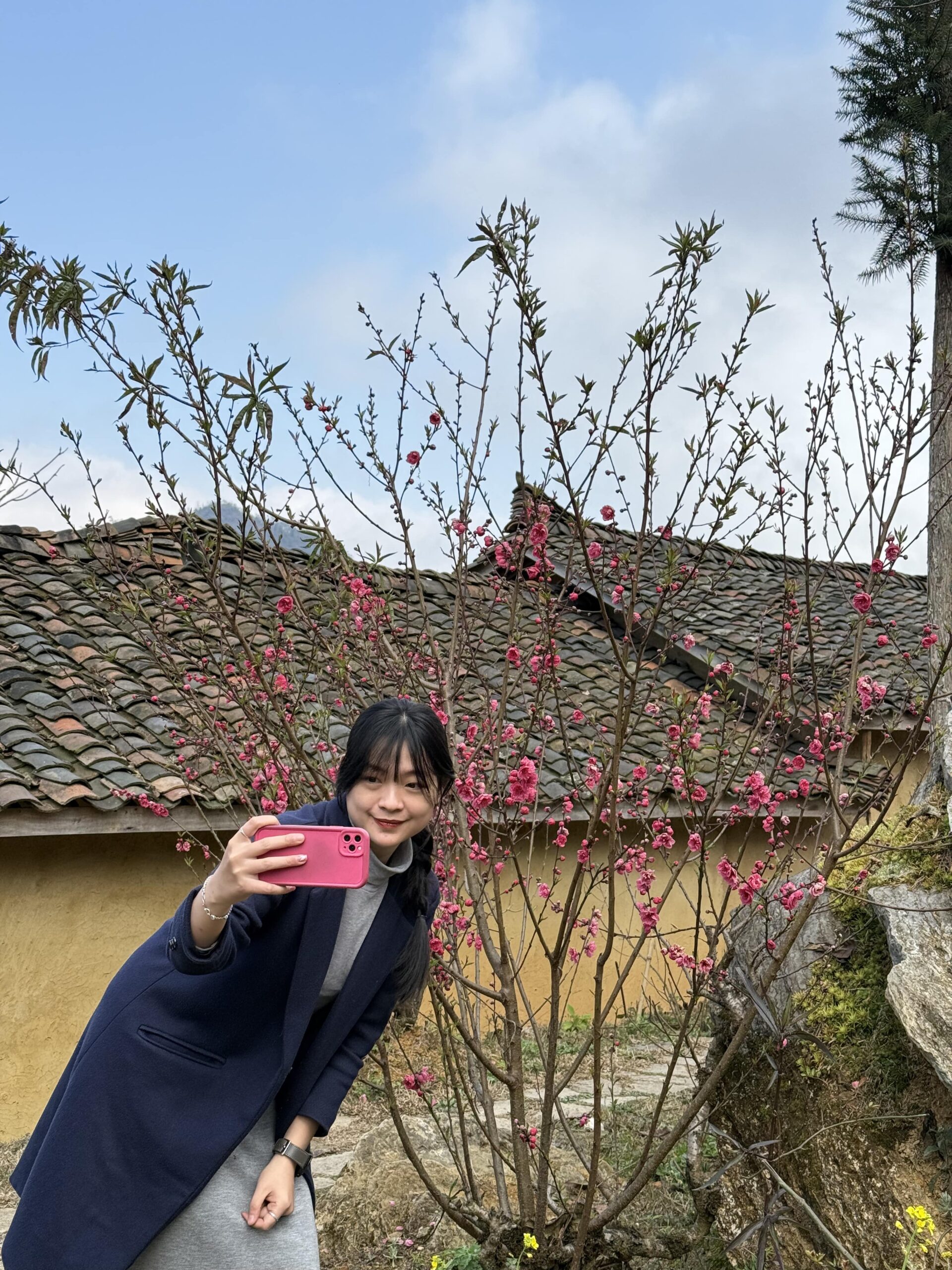
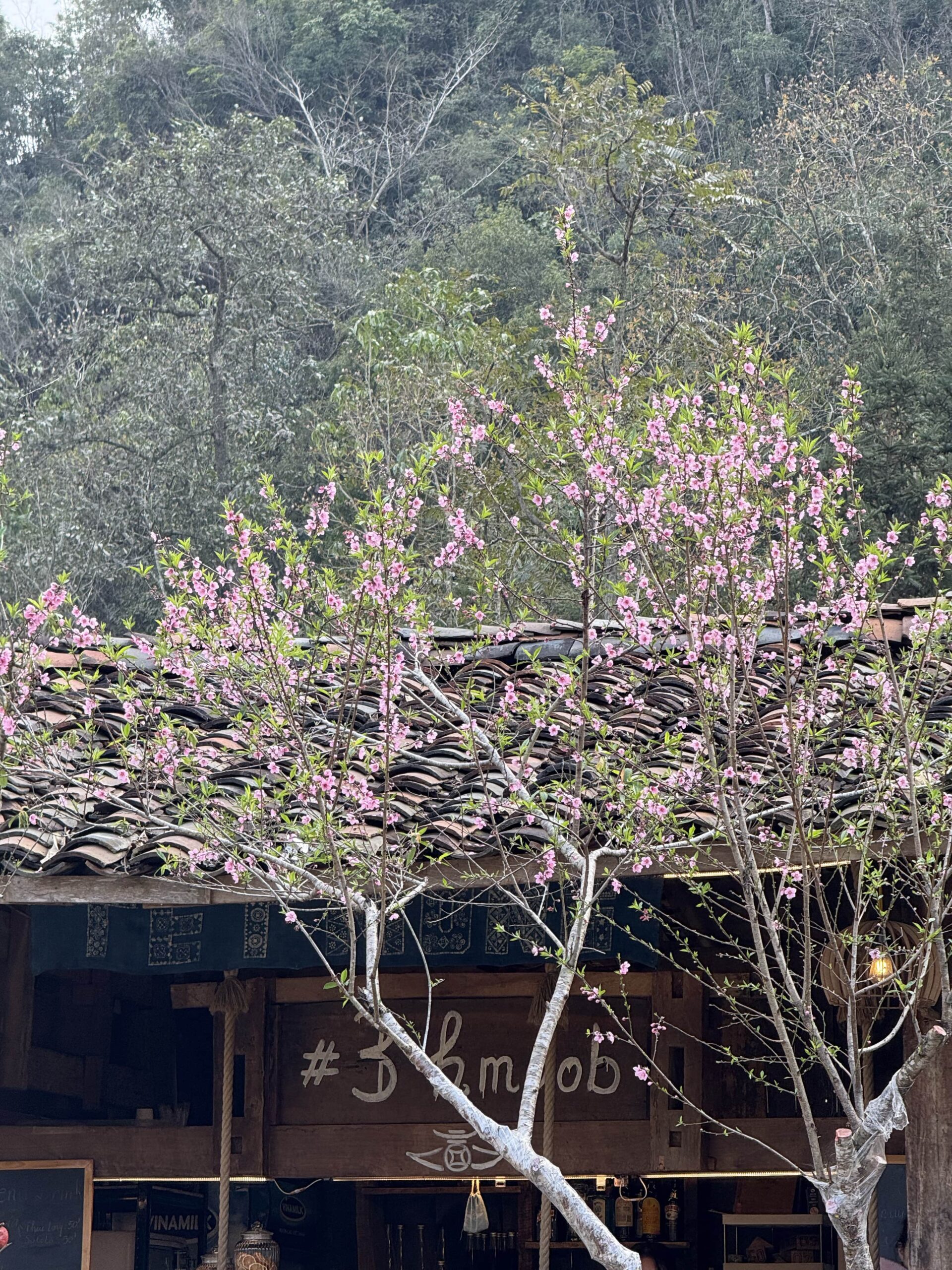
5. Accommodation in Then Pa Village
Staying overnight in Then Pa provides a deeper understanding of village rhythms and Highland life. While accommodations remain limited and basic, they offer authentic immersion impossible to experience on a day trip.
5.1 Homestay Options & What to Expect
Then Pa offers several family-run homestays where visitors can experience traditional Hmong hospitality. These accommodations are typically part of family compounds, with guests staying in the main house or in purpose-built extensions. Based on Phieu Travel’s regular visits, here’s what you can expect:
Facilities at Then Pa homestays generally include:
- Shared sleeping areas with mattresses on raised platforms
- Mosquito nets and blankets (essential in the cool mountain climate)
- Shared bathroom facilities, usually with basic showers and toilets
- Common dining areas where meals are prepared and eaten together
- Limited or no Wi-Fi connectivity (consider this a chance to disconnect)
The homestay experience centers around community engagement. Host families typically include guests in evening activities, from meal preparation to gathering around the hearth for conversation or music. Meals feature local ingredients, often harvested from the family’s own gardens. While language barriers may exist, the warmth of Hmong hospitality transcends verbal communication.
It’s important to understand that homestays in Then Pa represent authentic family homes rather than commercial accommodations. Expect simple facilities, occasional power outages, and rustic conditions. These limitations are more than compensated by the cultural richness and genuine connections formed during your stay.

5.2 Booking Tips and Contact Info
Arranging accommodation in Then Pa requires advance planning, as homestays have limited capacity and communication systems can be unreliable. Phieu Travel recommends these approaches:
- Book through a reputable tour operator like Phieu Travel who maintains direct relationships with Then Pa families
- Contact the Dong Van Tourism Information Center for updated homestay listings
- Reach out to Ha Giang provincial tourism authorities for officially licensed homestay options
When booking, consider these practical tips:
- Reserve at least 2-3 weeks in advance during peak season (September-November and March-May)
- Provide information about dietary restrictions or special needs, as options for accommodation may be limited
- Confirm pricing, including whether meals are included (most homestays charge per person with meals included)
- Arrange transportation to and from the village, as public options are virtually non-existent
For those seeking a balance between authenticity and comfort, Phieu Travel can arrange accommodation in nearby Dong Van town, with daytime visits to Then Pa. This option provides modern facilities while still allowing meaningful exploration of the village.
While visiting Then Pa as a day trip from Dong Van is possible, we strongly recommend the overnight experience. The village transforms as day-trippers depart, revealing its true character in the quiet evening hours and misty mornings.

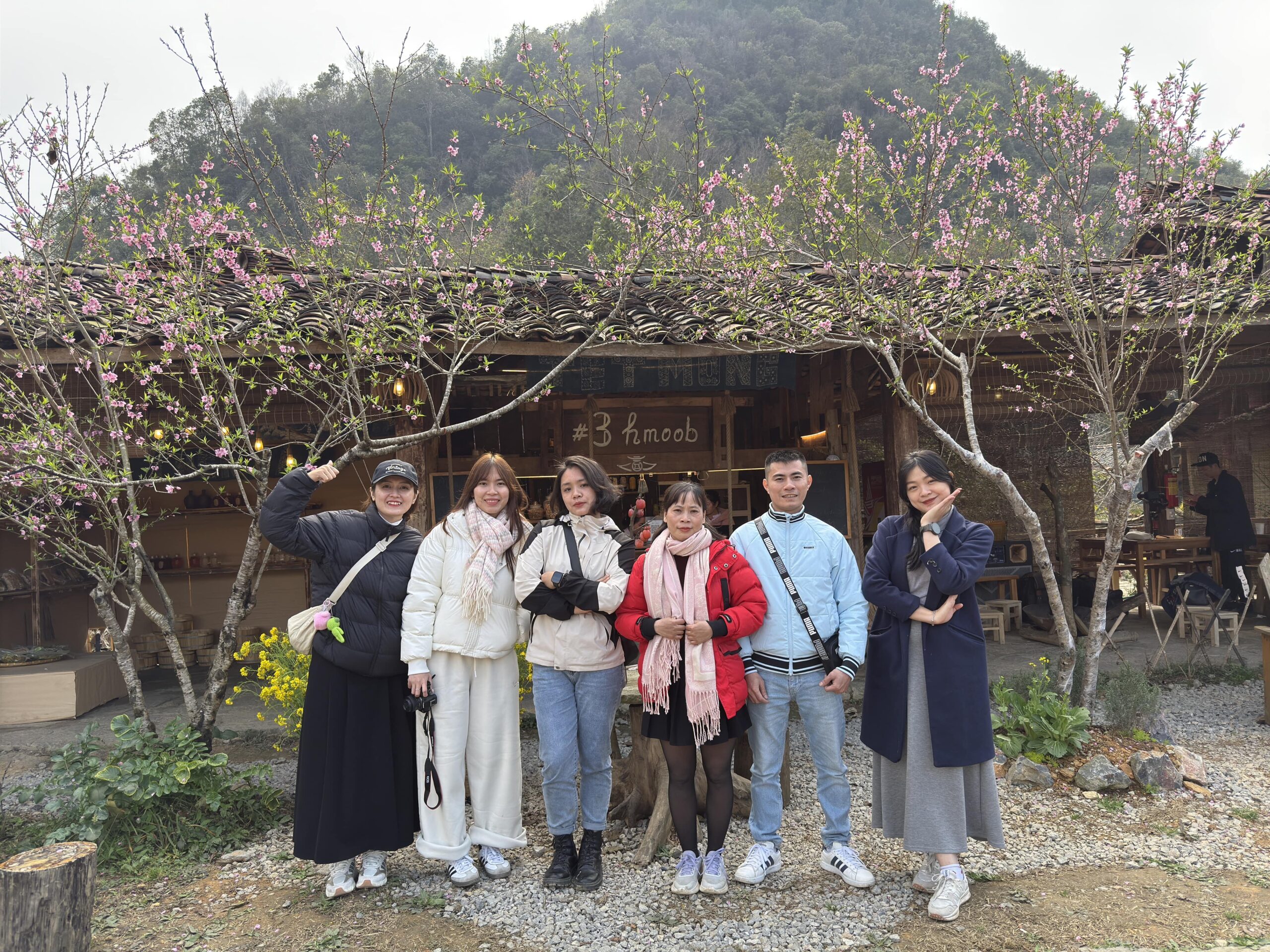
6. Visitor Tips & FAQs
Visiting remote villages like Then Pa requires preparation and cultural sensitivity. These practical tips and frequently asked questions will help you plan a respectful and rewarding experience.
6.1 Best Time to Visit
The climate and cultural calendar of Then Pa influence when to plan your visit. Based on Phieu Travel’s extensive experience in the region, we recommend these optimal times:
- September to November (Fall): Perhaps the ideal time to visit, with clear skies, moderate temperatures, and stunning views. The harvest season brings vibrant activity to the village, with families processing crops and preparing for winter. The golden light during these months creates perfect photography conditions.
- March to May (Spring): Another excellent period, with warming temperatures and blooming vegetation. Spring festivals sometimes occur during this time, offering glimpses of cultural celebrations. Fields are being planted, creating gorgeous green patterns across the landscape.
- December to February (Winter): For the adventurous traveler, winter offers a distinctive experience with misty mountains and the chance to see frost-covered landscapes. Villagers spend more time indoors, with family gatherings around hearth fires. Temperatures can drop significantly, especially at night, so prepare with appropriate clothing.
- June to August (Summer): We generally don’t recommend summer visits due to heavy rainfall, which can make roads hazardous and views obscured. However, the lush green landscape during breaks in the rain can be spectacular for photographers willing to wait for clear conditions.
Cultural events follow the lunar calendar, so specific dates change yearly. If you’re interested in experiencing traditional celebrations, Phieu Travel can advise on upcoming events when planning your journey.
6.2 Responsible Tourism & Local Etiquette
Then Pa’s cultural integrity depends on respectful visitor behavior. Phieu Travel emphasizes these guidelines for responsible tourism:
When interacting with villagers:
- Ask permission before taking photographs, especially of people.
- Dress modestly, with shoulders and knees covered.
- Remove shoes when entering homes.
- Accept offers of tea or food when possible, as this is an important hospitality gesture.
- Bring small gifts like tea, fruit, or school supplies rather than candy or money.
For environmental responsibility:
- Carry out all trash you generate.
- Use water sparingly, as the village has limited resources.
- Stay on established paths to prevent erosion.
- Avoid picking plants or disturbing agricultural areas.
Cultural considerations:
- Some traditional ceremonies may not be open to outsiders.
- Religious shrines and sacred trees should be observed respectfully.
- The Hmong New Year period may have special restrictions or opportunities.
When purchasing crafts or services, fair compensation supports sustainable tourism. Rather than aggressive bargaining, recognize that reasonable prices help preserve traditional skills and provide economic alternatives to migration.
6.3 Safety & Seasonality
While Then Pa is generally safe for visitors, its remote location requires preparation:
Health and safety considerations:
- Bring basic medications, as pharmacies are non-existent in the village.
- Carry sufficient cash, as ATMs are only available in Dong Van town.
- Download offline maps, as mobile coverage is spotty.
- Register your visit with local authorities (your guide can handle this).
- Wear sturdy shoes suitable for uneven terrain.
Weather impacts:
- The rainy season (June-August) can cause landslides and road closures.
- Winter nights (December-February) are cold, requiring warm clothing.
- Fog can reduce visibility suddenly, especially in early mornings.
For emergencies, the nearest medical facilities are in Dong Van town, approximately 20 kilometers away. Serious medical issues require evacuation to Ha Giang city or Hanoi. Phieu Travel guides carry first aid kits and maintain communication protocols for emergency situations.
Seasonal factors affect not just weather but what you’ll experience in the village. Spring planting, summer growth, fall harvest, and winter preparation each bring different activities and visual elements to Then Pa. When planning your visit, consider both practical conditions and what aspects of village life you most want to observe.
Then Pa Ha Giang represents one of Vietnam’s most authentic cultural experiences, offering a rare glimpse into traditional Hmong life amid spectacular natural beauty. As responsible travelers, our visits can help preserve rather than disrupt this special place. At Phieu Travel, we’re committed to facilitating meaningful connections while ensuring Then Pa remains vibrant for generations to come. For more information or to book your journey to Then Pa and other hidden gems of northern Vietnam, visit us at Phieutravel.com.
Read more:
- Hoang Su Phi rice terraces ultimate travel guide 2025
- Best places to visit in Northern Vietnam a complete 2025 guide
- Ha Giang Loop cost guide 2025: real prices, tour options & savings
- The Ultimate Guide to Driving the Ha Giang Loop by Car from Hanoi

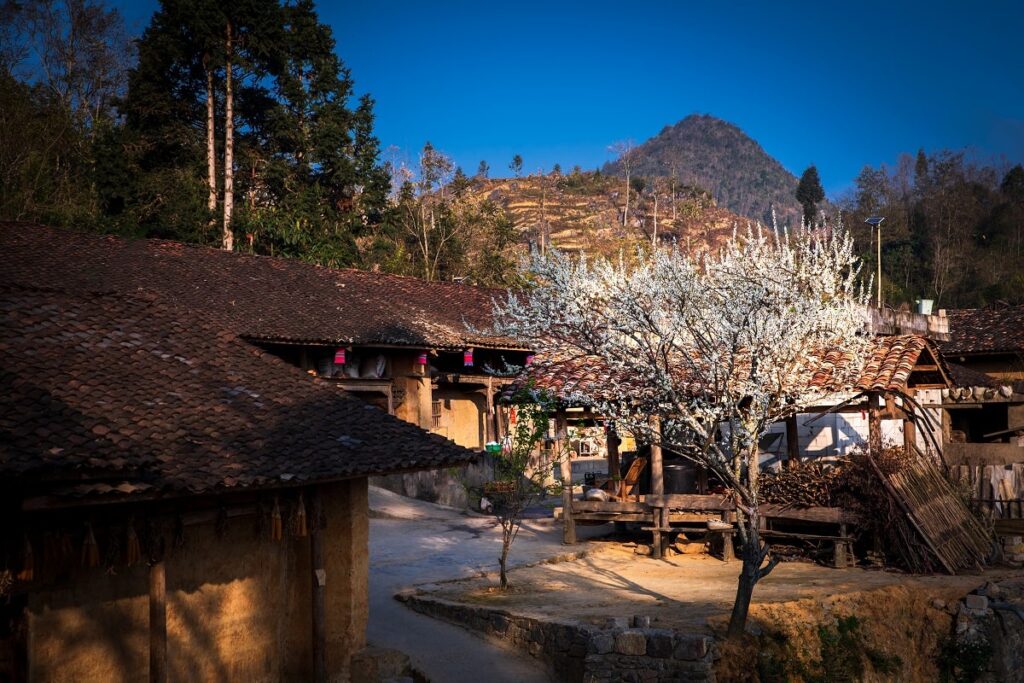
You Might Also Like
Ha Giang Weather in September: Complete Guide for Travelers
Exploring the magnificent Ha Giang Loop in September offers travelers a perfect balance of favorable[...]
Quan Ba Twin Mountains: Ha Giang’s Iconic Fairy Hills and Complete Travel Guide
The mystical Quan Ba Twin Mountains rise from the emerald valleys of Ha Giang like[...]
Vuong family mansion: the architectural marvel and cultural legacy of Ha Giang
Deep in Vietnam’s northern highlands, where mist-shrouded mountains meet terraced rice fields, stands a testament[...]
Ha Giang Loop Safety Tips: How to Ride Securely in Vietnam’s Northern Mountains
The Ha Giang Loop, with its winding mountain roads and breathtaking landscapes, offers one of[...]
The Ultimate Guide to the M-Shaped Curve on Ha Giang Loop
Vietnam’s remote northern province of Ha Giang hides a natural wonder that has captivated adventurous[...]
Most Beautiful Places to Visit in Vietnam: Essential Destinations and Insider Tips
Vietnam captivates travelers with its stunning landscapes, rich cultural heritage, and warm hospitality. From mist-shrouded[...]
Beyond the Beaten Path: Discovering Ha Giang Province in Northeast Vietnam
Ha Giang Province in Northeast Vietnam stands as one of the country’s last frontiers for[...]
Rainy season in Ha Giang: what to expect, when to go, and travel tips
Vietnam’s northern frontier reveals a different face during the rainy season, transforming Ha Giang’s limestone[...]